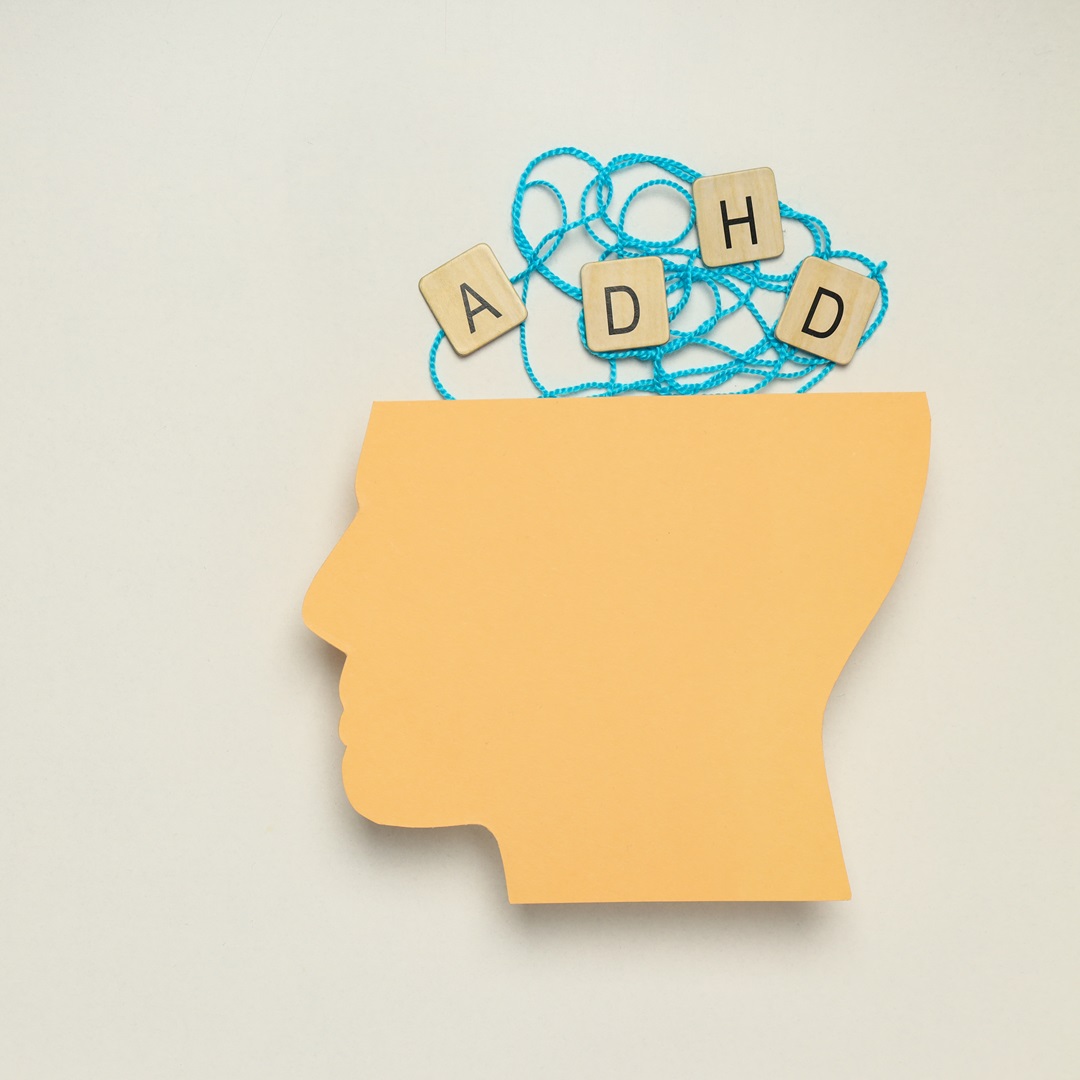by Stephen Luther, M.D.
Share

ADHD, or Attention-Deficit/Hyperactivity Disorder, first recognized more than a century ago, is a neurodevelopmental condition affecting cognitive function. Today, more than 5 million children in the U.S., along with 4.5% of adults, are diagnosed with ADHD – 62% of those adults being male.
This chronic condition can deeply impact academic, professional, and personal life, making tasks such as focusing, maintaining relationships, and managing communication challenging. It can also lead to feelings of inadequacy, lower self-esteem, and heightened sensitivity to criticism.
It’s important to note that ADHD shares symptoms with other conditions like learning disabilities, mood disorders, anxiety, substance abuse, head trauma, and thyroid issues, which can also impair mental functioning.
ADHD Types and Symptoms
ADHD is commonly categorized into three types: inattentive, impulsive/hyperactive, and combined.
- Inattentive ADHD: Difficulty staying focused on tasks is a hallmark of this type, often leading to procrastination, avoidance of mentally demanding activities, and a more stressful lifestyle.
- Impulsive/Hyperactive ADHD: Common in younger individuals, this type is marked by restlessness, difficulty staying seated, talking out of turn, and emotional outbursts.
- Combined ADHD: The most difficult to manage and diagnose, this type exhibits traits from both categories and is often mistaken for other mental health concerns.
ADHD and the Brain
Research has linked ADHD to specific genetic factors, particularly involving the dopamine receptor gene (DRD2 A1 allele). This gene affects dopamine levels, a key neurotransmitter that influences motivation and motor control. Reduced dopamine sensitivity can lead to impulsive behaviors. Another key player is the enzyme Aromatic L-Amino Acid Decarboxylase, which is crucial for neurotransmitter production, further highlighting ADHD’s biological complexity.
Additionally, there’s some evidence surrounding mercury-based preservatives like thimerosal (ethylmercury) found in vaccines, and their potential neurotoxic effects. While ethylmercury has a shorter half-life than methylmercury, the buildup of inorganic mercury in the brain over time raises concerns about developmental impacts, including ADHD.
Other Factors Influencing ADHD
Conditions like thyroid issues, particularly hyperthyroidism, can mimic or worsen ADHD symptoms. An overactive thyroid can cause restlessness, impulsivity, and trouble concentrating, all of which overlap with ADHD traits.
Nutrition’s Role in ADHD Management
Nutrition plays a growing role in managing ADHD symptoms. While medications like methylphenidate (Ritalin) and dextroamphetamines offer short-term relief, diet can provide long-term support. Deficiencies in nutrients like magnesium, zinc, iron, and omega-3 fatty acids can contribute to ADHD symptoms. A diet rich in protein (found in eggs, cheese, meat, nuts), healthy carbohydrates (vegetables, fruits), and avoiding processed sugars can improve focus, brain function, and even sleep quality.
A Positive Outlook for a Negative Connotation
Hyperactivity to Our Advantage
ADHD can offer unique strengths such as high energy, creativity, hyperfocus, resilience, spontaneity, and an ability to tolerate risk, which can be empowering for individuals with the condition. Those with hyperactivity often have abundant energy, and channeling it effectively can become a natural advantage both physically and mentally. Creativity and out-of-the-box thinking are common, as ADHD brains continuously seek new sources of engagement. Hyperfocus allows individuals to intensely concentrate on tasks they are passionate about, while risk-taking tendencies can lead to bold decision-making. People with ADHD also develop heightened self-awareness from frequently monitoring their behavior. Successful individuals like Michael Phelps, Albert Einstein, and Walt Disney exemplify how these traits, when honed, can lead to exceptional achievement, showing that ADHD can be a source of determination, passion, and optimism in pursuits of interest.
Symbios Lab
At Symbios Lab, our expertly skilled lab technicians are effectively capable of translating chemical, metabolic and biophysiological conditions down the molecular level in order to produce above adequate results for our primary care specialists to guide and help each individual based on their needs for a successful lifestyle moving forward.
Symbios Nutrition
Our nutrition team is second to none as they are able to demonstrate their expertise on a acute and broad spectrum in regards to essential whole foods, vitamin and mineral deficiencies and creating a specific nutrition plan based on individual needs for the exact nutrients one’s body requires based on its current state.
ADHD can be a “blessing and curse”. How we chose to go on in our lives is of the utmost importance regarding our physical and mental health. Consult with our specialized team at Symbios to see how we can effectively help you on your journey through life to reach and maintain the most healthy, fit and beautiful life!
References
- Barrett, J. R. (2005). Thimerosal and Animal Brains: New Data for Assessing Human Ethylmercury Risk. Environmental Health Perspectives, 113(8), A543–A544.
- Committee, I. of M. (US) I. S. R., Stratton, K., Gable, A., & McCormick, M. C. (2001). Thimerosal-Containing Vaccines and Neurodevelopmental Disorders. In ncbi.nlm.nih.gov. National Academies Press (US).
- Dórea, J. G., Farina, M., & Rocha, J. B. T. (2013). Toxicity of ethylmercury (and Thimerosal): a comparison with methylmercury. Journal of Applied Toxicology, 33(8), 700–711.
- Gehricke, Jean-G., Kruggel, F., Thampipop, T., Alejo, S. D., Tatos, E., Fallon, J., & Muftuler, L. T. (2017). The Brain Anatomy of attention-deficit/hyperactivity Disorder in Young Adults – a Magnetic Resonance Imaging Study. PLOS ONE, 12(4).
- Geier, D. A., Geier, D. A., Homme, K. G., & Geier, M. R. (2018). A cross-sectional study of the relationship between infant Thimerosal-containing hepatitis B vaccine exposure and attention-deficit/hyperactivity disorder. Journal of Trace Elements in Medicine and Biology, 46, 1–9.
- Gunnerson, T. (2020, July 2). A brief history of ADHD. WebMD; WebMD.
- https://www.facebook.com/verywell. (2021). What Are the Benefits of Having ADHD? Verywell Mind.
- Hurley, A. M., Tadrous, M., & Miller, E. S. (2010). Thimerosal-containing vaccines and autism: a review of recent epidemiologic studies. The Journal of Pediatric Pharmacology and Therapeutics : JPPT : The Official Journal of PPAG, 15(3), 173–181.
- Lange, K. W., Reichl, S., Lange, K. M., Tucha, L., & Tucha, O. (2010). The history of attention deficit hyperactivity disorder. ADHD Attention Deficit and Hyperactivity Disorders, 2(4), 241–255.
- Masters, T. (2023, April 14). ADHD and Thyroid Problems – Edge Foundation. Edge Foundation.
- National Institute of Mental Health. (2014). Attention-Deficit/Hyperactivity Disorder (ADHD). www.nimh.nih.gov; National Institute of Mental Health.
- National Institute of Mental Health. (2023, September). Attention-Deficit/Hyperactivity Disorder. www.nimh.nih.gov; National Institute of Mental Health.
- Oscar Berman, M., Blum, K., Chen, T. J., Braverman, E., Waite, R., Downs, W., Arcuri, V., Notaro, A., Palomo, T., & Comings, D. (2008). Attention-deficit-hyperactivity Disorder and Reward Deficiency Syndrome. Neuropsychiatric Disease and Treatment, 4(5), 893–918.
- Rooney, J. P. K. (2014). The retention time of inorganic mercury in the brain–a systematic review of the evidence. Toxicology and Applied Pharmacology, 274(3), 425–435.
- Roybal, B. (2008, May 13). ADHD Diet and Nutrition. WebMD; WebMD.





